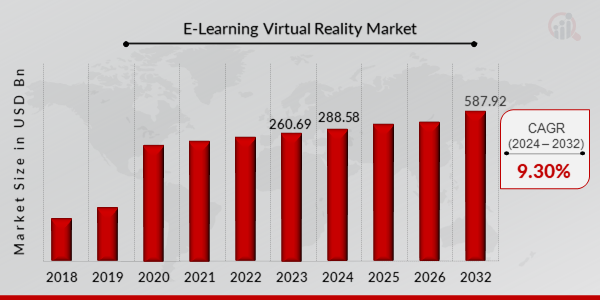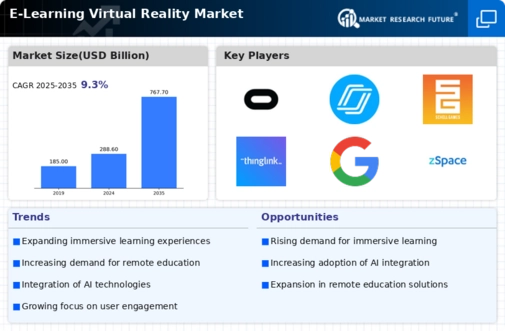Market Growth Projections
Enhanced Learning Outcomes
The potential for improved learning outcomes through virtual reality is a compelling driver for the Global E-Learning Virtual Reality Market Industry. Research indicates that immersive learning experiences can lead to higher retention rates and deeper understanding of complex subjects. By engaging multiple senses, VR can create memorable educational experiences that traditional methods may lack. As educational stakeholders increasingly seek evidence-based approaches to enhance learning, the demand for VR solutions is likely to rise, further propelling market growth.
Technological Advancements
The rapid evolution of technology is a primary driver of the Global E-Learning Virtual Reality Market Industry. Innovations in hardware and software, such as improved VR headsets and immersive learning platforms, enhance user experiences and engagement. For instance, advancements in graphics and processing power allow for more realistic simulations, which can lead to better retention of information. As of 2024, the market is valued at 288.6 USD Billion, indicating a strong demand for these technologies. This trend is expected to continue, with projections suggesting that by 2035, the market could reach 767.7 USD Billion, reflecting a growing reliance on virtual reality in educational settings.
Increased Adoption in Education
The integration of virtual reality into educational curricula is significantly influencing the Global E-Learning Virtual Reality Market Industry. Educational institutions are increasingly recognizing the benefits of immersive learning experiences, which can enhance student engagement and understanding. For example, VR can simulate complex scientific experiments or historical events, providing students with hands-on experience that traditional methods cannot offer. This shift towards experiential learning is likely to contribute to a compound annual growth rate of 9.3% from 2025 to 2035, as more schools and universities adopt VR technologies to improve educational outcomes.
Global Demand for Remote Learning
The growing demand for remote learning solutions is a crucial factor driving the Global E-Learning Virtual Reality Market Industry. As educational institutions and organizations seek to provide flexible learning options, virtual reality offers an innovative approach to distance education. By creating immersive environments, VR can bridge the gap between physical and virtual classrooms, allowing learners to interact with content in a more engaging manner. This trend is particularly relevant in regions with limited access to traditional educational resources, potentially expanding the market's reach and contributing to its projected growth.
Corporate Training and Development
The corporate sector's increasing investment in training and development is a significant driver of the Global E-Learning Virtual Reality Market Industry. Companies are recognizing the value of VR in providing realistic training scenarios that enhance employee skills and knowledge retention. For instance, industries such as healthcare and manufacturing utilize VR simulations for training purposes, allowing employees to practice in a safe environment. This trend is expected to bolster the market, as organizations prioritize effective training solutions that can lead to improved performance and productivity.

















